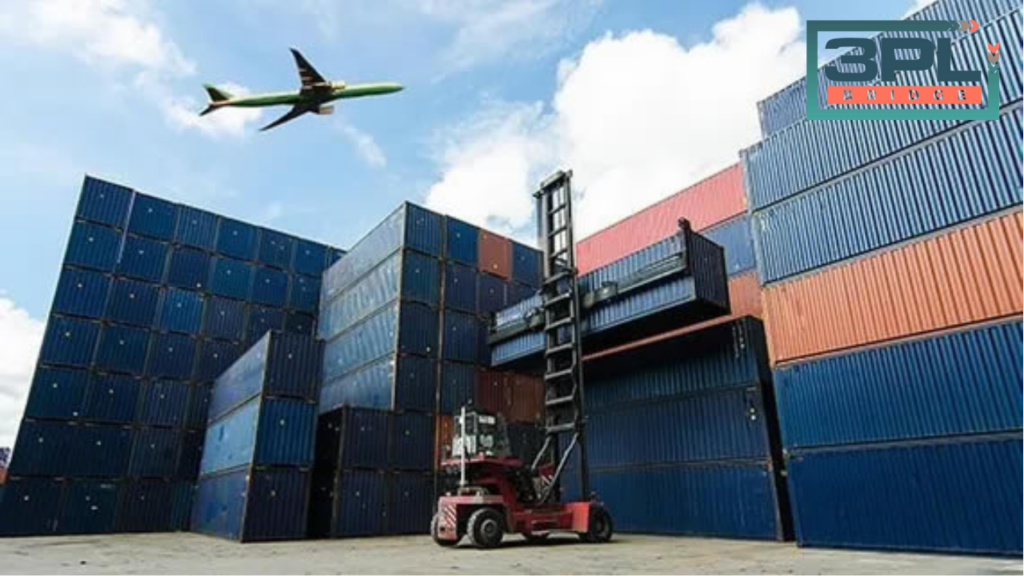
Warehousing in Supply Chain Management performs a key function in business operations. It serves as a critical bridge between production and distribution, promoting the smooth flow of goods and ensuring that the supply route for business operations remains efficient and streamlined.
Benefits of Supply Chain Management with Effective Warehousing
In the fast-paced world of SCM, efficient warehousing plays a pivotal role in ensuring the seamless flow of goods and services from suppliers to customers. By strategically integrating warehousing into the supply chain process, businesses can reap numerous benefits, streamline operations, and gain a competitive advantage in the market.
A well-executed warehousing strategy can greatly enhance SCM. It achieves this by improving operational efficiency, enhancing customer service, reducing inventory costs, and bolstering flexibility and adaptability—all of which ultimately drive business profitability.
SCM Warehouse
A warehouse space in supply chain management is a storage facility primarily responsible for the processes involved in the receipt, storage, and movement of goods. They are not simply a physical space for storage, but a strategic asset that, when managed properly, can enhance customer satisfaction, increase productivity, improve inventory management, and reduce operational costs.
In the realm of supply chain management (SCM), the warehouse serves as a pivotal component that drives efficiency and ensures the smooth flow of goods. An effective warehouse space acts as a central hub for inventory storage, order processing, and distribution, playing a critical role in optimizing the overall supply chain operations. Efficient warehouse operations and implementing a maintaining warehouse management system are critical components at the forefront of supply chain managers’ agenda.
Warehousing Supply Chains
Warehousing plays a crucial role in the supply chain, serving as the central hub for both storing goods, managing, and distributing goods. It acts as a bridge between production and distribution, ensuring a smooth flow of products from suppliers to consumers.
Efficient warehousing operations can significantly improve productivity and enhance supply chain management by improving inventory control, reducing costs, mitigating risks, and boosting customer service. By leveraging advanced technologies and implementing effective warehouse management strategies, businesses can optimize their warehousing operations, leading to improved operational efficiency, customer satisfaction, and overall business profitability.
Enhanced Inventory Management
One of the primary benefits of warehousing in SCM is the improved efficiency of inventory management. Warehouses provide businesses with the ability to safely store products in bulk, enabling cost-effective purchasing and economies of scale.
An effective inventory and management system reduces stockouts, inventory accountability optimizes order quantities, and enhances forecasting accuracy, ultimately leading to improved customer satisfaction.
It also minimizes holding costs by storing products and ensuring that inventory levels are aligned with customer demand. This eliminates the need for excessive stock and reduces the risk of obsolete or expired products, resulting in cost savings for the business.
Improved Order Fulfillment
Warehousing facilitates efficient order fulfillment processes within the supply chain. By centralizing inventory in distribution warehouses, businesses can quickly locate and pick products for timely shipment. This results in faster order processing, reduced lead times, and enhanced order accuracy.
Efficient order fulfillment strengthens customer relationships and increases repeat business.
Furthermore, warehousing enables businesses to implement advanced order fulfillment strategies such as cross-docking or pick-and-pack operations.
These strategies help to fulfill orders, automate processes expedite order processing and minimize handling time, and shipping costs, and lead to improved customer satisfaction and loyalty.
Cost Optimization
Strategic warehousing leads to cost optimization throughout supply chains. By leveraging economies of scale in inventory storage and transportation, businesses can reduce carrying costs, minimize warehousing expenses, and achieve cost efficiencies.
Warehousing allows for bulk purchasing and consolidating shipments, resulting in lower procurement and transportation costs.
Warehousing also plays a vital role in cost optimization through effective demand management. By having sufficient inventory on hand, businesses can better respond to fluctuating customer demands, reducing the need for rush orders or expedited shipping, which can be costly.
Mitigated Supply Chain Risks
Warehousing serves a vital role in mitigating supply chain risks. By maintaining buffer stock and safety reserves, businesses can better navigate unexpected disruptions such as production delays, transportation issues, or supplier disruptions.
Warehouses act as a buffer between various stages of the supply chain, providing flexibility in inbound and outbound shipments and ensuring continuity in operations.
In addition, warehousing allows for effective quality control measures for raw materials. Products can be inspected, tested, and stored under appropriate conditions to maintain their quality and integrity.
This minimizes the risk of delivering substandard products to customers, protecting the business’s reputation and reducing the potential for costly returns or recalls.
Streamlined Customer Service
Effective supply chain warehousing also directly impacts customer service levels. With enough warehouse staff, well-organized warehouses, secure storage, and efficient inventory management systems, businesses can fulfill customer orders quickly and accurately.
Timely order delivery, reduced order errors, and easy product access contribute to enhanced customer satisfaction and loyalty.
Warehousing also enables businesses to offer value-added services to customers, such as kitting, labeling, or customization. These additional services can be performed in the warehouse, reducing lead times and enhancing the overall customer experience.
Effective Warehouse Management Strategies
To harness the full economic benefits of warehousing in SCM, businesses should implement effective warehouse management strategies. These strategies include:
Optimal Layout and Space Utilization
Designing a warehouse layout that maximizes space utilization and promotes efficient material flow is crucial. By utilizing storage space optimization techniques, businesses can accommodate higher inventory volumes while minimizing wasted space.
Advanced Inventory Tracking and Technology
Implementing robust inventory tracking systems, such as warehouse management systems (WMS), barcode scanning security cameras, and RFID tagging, allows real-time visibility into store inventory levels. This technology improves order accuracy and enables proactive decision-making.
Efficient Labor Management
Optimizing labor resources through proper workforce planning, training, and task allocation enhances warehouse operation and productivity. Businesses should focus on optimizing picking and packing processes, reducing labor-intensive tasks, picking processes, and fostering a culture of continuous improvement.
Seamless Integration with Transportation
Effective coordination between warehousing and transportation is vital for a well-functioning supply chain. Integrating transportation management systems (TMS) with WMS enables efficient order routing, accurate load planning, and improved delivery schedules.
Continuous Process Improvement
Regularly reviewing warehouse processes and implementing continuous improvement initiatives ensures operational efficiency. By analyzing key performance indicators (KPIs), identifying bottlenecks, and implementing process enhancements, businesses can optimize their warehouse operations to reduce costs and enhance overall supply and utility value chain performance.
3PL Bridge: Enhancing Warehousing in Supply Chain Management
As a third-party logistics company, 3PL Bridge specializes in e-commerce fulfillment, inventory overflow management, and direct-to-consumer (DTC) fulfillment.
Our warehousing services handle the heavy lifting of inventory management, order fulfillment, and product delivery, allowing businesses to focus on sales and customer service.
For businesses dealing with inventory overflow, we provide on-demand storage solutions. This service ensures effective management of excess inventory.
Incorporating 3PL Bridge warehousing services into your supply chain management strategy can save time, create a frictionless customer journey, scale your business to handle higher customer volume, and provide dedicated customer support.
By bridging the gap between digital customers and real-world deliveries, we help businesses grow their e-commerce operations and gain a competitive advantage in the market.
Conclusion
Warehousing serves a vital function in supply chain management, providing several benefits to businesses. By enhancing inventory management, boosting order fulfillment, streamlining costs, mitigating risks, and refining customer service, effective warehousing significantly contributes to the efficiency of the overall supply chain.
Strategically storing products in bulk, facilitating swift order processing, and maintaining high levels of order accuracy yield considerable cost savings. This not only increases customer satisfaction but also drives business profitability.
Implementing comprehensive warehouse management strategies and harnessing advanced technologies allows businesses to unlock the full potential of their warehousing operations. This approach not only refines existing processes but also enables businesses to gain a competitive edge in an ever-evolving marketplace.
At 3PL Bridge, we recognize and tap into the transformative power of efficient warehousing, illustrating the profound impact of warehousing on supply chain management.



